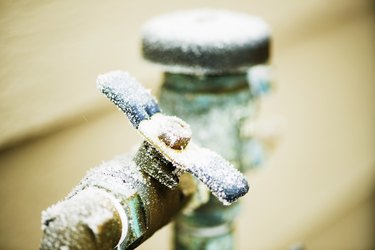Advice for Avoiding Frozen Plumbing in Winter: Professional Advice
Advice for Avoiding Frozen Plumbing in Winter: Professional Advice
Blog Article
Listed here further down yow will discover a good deal of superb answers all about Prevent Frozen Pipes .

Winter can wreak havoc on your plumbing, specifically by freezing pipelines. Below's just how to stop it from occurring and what to do if it does.
Introduction
As temperatures drop, the danger of icy pipelines boosts, potentially bring about expensive fixings and water damage. Recognizing exactly how to stop frozen pipelines is critical for property owners in chilly climates.
Recognizing Icy Pipes
What causes pipes to freeze?
Pipelines ice up when revealed to temperature levels below 32 ° F (0 ° C) for expanded periods. As water inside the pipes ices up, it expands, taxing the pipe walls and possibly causing them to break.
Dangers and damages
Icy pipes can lead to supply of water interruptions, building damage, and costly repair services. Burst pipes can flooding homes and cause substantial architectural damage.
Indications of Frozen Water Lines
Determining icy pipelines early can prevent them from breaking.
Just how to identify icy pipelines
Try to find decreased water circulation from faucets, uncommon smells or noises from pipelines, and noticeable frost on exposed pipes.
Avoidance Tips
Protecting vulnerable pipelines
Cover pipes in insulation sleeves or make use of warmth tape to safeguard them from freezing temperatures. Focus on pipes in unheated or exterior areas of the home.
Home heating techniques
Maintain interior spaces appropriately warmed, especially areas with pipes. Open cabinet doors to enable warm air to distribute around pipelines under sinks.
Shielding Outside Plumbing
Garden hoses and outdoor faucets
Disconnect and drain garden pipes before wintertime. Mount frost-proof spigots or cover outside faucets with insulated caps.
What to Do If Your Pipes Freeze
Immediate actions to take
If you suspect frozen pipelines, maintain faucets open to eliminate stress as the ice thaws. Use a hairdryer or towels taken in hot water to thaw pipes slowly.
Long-Term Solutions
Architectural adjustments
Think about rerouting pipes far from exterior walls or unheated areas. Add additional insulation to attics, cellars, and crawl spaces.
Upgrading insulation
Purchase premium insulation for pipes, attic rooms, and wall surfaces. Proper insulation assists preserve regular temperature levels and reduces the risk of frozen pipelines.
Conclusion
Preventing icy pipelines calls for aggressive measures and fast feedbacks. By comprehending the causes, indications, and safety nets, property owners can shield their pipes throughout cold weather.
5 Ways to Prevent Frozen Pipes
Drain Outdoor Faucets and Disconnect Hoses
First, close the shut-off valve that controls the flow of water in the pipe to your outdoor faucet. Then, head outside to disconnect and drain your hose and open the outdoor faucet to allow the water to completely drain out of the line. Turn off the faucet when done. Finally, head back to the shut-off valve and drain the remaining water inside the pipe into a bucket or container. Additionally, if you have a home irrigation system, you should consider hiring an expert to clear the system of water each year.
Insulate Pipes
One of the best and most cost-effective methods for preventing frozen water pipes is to wrap your pipes with insulation. This is especially important for areas in your home that aren’t exposed to heat, such as an attic. We suggest using foam sleeves, which can typically be found at your local hardware store.
Keep Heat Running at 65
Your pipes are located inside your walls, and the temperature there is much colder than the rest of the house. To prevent your pipes from freezing, The Insurance Information Institute suggests that you keep your home heated to at least 65 degrees, even when traveling. You may want to invest in smart devices that can keep an eye on the temperature in your home while you’re away.
Leave Water Dripping
Moving water — even a small trickle — can prevent ice from forming inside your pipes. When freezing temps are imminent, start a drip of water from all faucets that serve exposed pipes. Leaving a few faucets running will also help relieve pressure inside the pipes and help prevent a rupture if the water inside freezes.
Open Cupboard Doors
Warm your kitchen and bathroom pipes by opening cupboards and vanities. You should also leave your interior doors ajar to help warm air circulate evenly throughout your home.

Do you really like more info about 6 Ways to Prevent Frozen Pipes? Write a remark below. We'd be delighted to listen to your reactions about this blog. In hopes that you come back again in the near future. Do you know another person who is fascinated about the topic? Feel free to share it. We value reading our article about How To Avoid Freezing Pipes.
Visit My Web Page Report this page